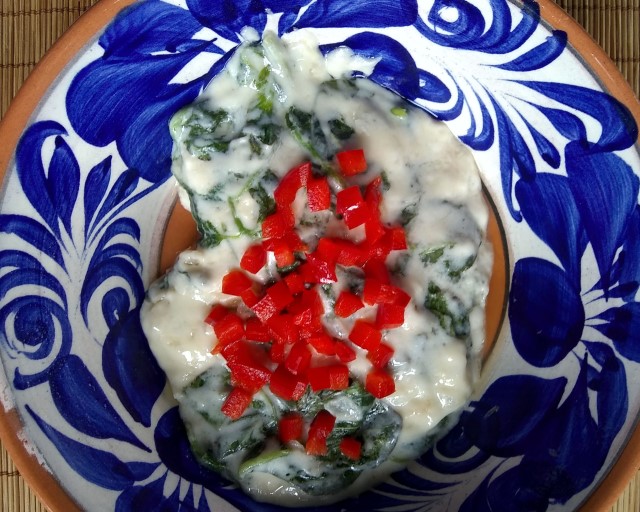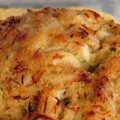After a long lunchless day at my father’s farm, he and I left for home hoping for a big dinner only to get caught in a rare rainstorm that got our truck stuck in the mud. It doesn’t rain much in Northern Mexico but when it rains it pours. After we were rescued by a neighbor’s farm worker equipped with chains and a tractor, we found ourselves late at night starving in the house of this noble man that got us out of the mud. It was a small adobe house with a dirt floor. No electricity. There was, however, a fogón, a three-foot-high fireplace which served as a wood burning stove, heating system and a source of light. Not enough comfort for contemporary standards but then, in the late 1950’s, it felt very cozy and it allowed me to see that my father was up to his knees with mud. We were graciously offered dinner and were seated around a table in front of tin enamel plates full of warm quelites.
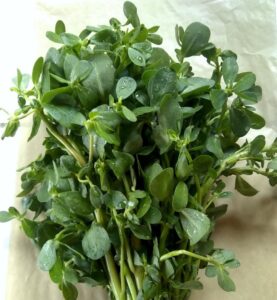
Purslane
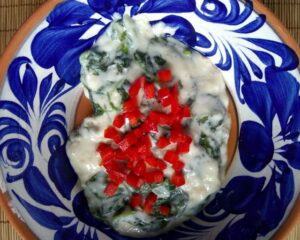
Quelites con Queso
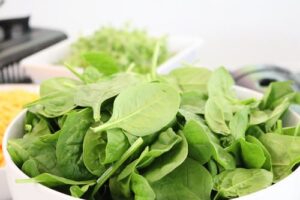
Spinach
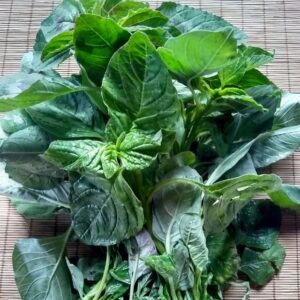
Quintoniles Amaranthus hybridus
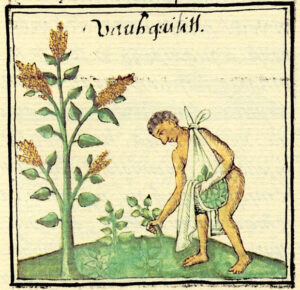
Ancient record of indigenous people collecting quelites.
Back to our stuck in the mud adventure, I recall in those days having read a short story in an elementary school book about a family situation that revolved around a dish called “Quelites con Queso” (recipe below). I do not remember what the story said, but this dish name came up in what seemed to me every other sentence claiming how delicious they were. Even though I had never eaten quelites con queso, because of the reading, I was very familiar with the dish—or at least I thought so. I now know that that book was the first “food book” I read…
After our quelites dinner, we left for home, about half an hour drive from where we were, fortunately with no more incidents. With no cell—or any other type of phone available—then, we obviously found my mother worried when we arrived. She knew it had been a long day. She also knew that we had run into trouble and most definitely, she knew that we had not carried food along. Immediately she asked if we had eaten, if we were hungry. I answered, “We had dinner. We had some delicious quelites con queso.” It was an announcement I was prepared and anxious to make, to which my father added: “Yes, we ate, yes they were quelites, but they didn’t have any cheese… they were rotten sour.” Poor me, just a kid—in poor lighting—thinking that I knew about eating quelites and not realizing that the acidic flavor on our dinner didn’t not come from melted cheese but from spoiled food… ”
Recipes for Quelites
Note: All quelites need to be rinsed only in cold water before proceeding to cook them, as hot water would extract their delicate flavor.
Quelites con Queso

Quelites con Queso
Ingredients:
10 oz. of quelites of your choice, roughly chopped. Spinach or purslane recommended.
½ onion, finely chopped
1 garlic clove, finely chopped
½ lb. Monterey Jack cheese, grated
Cooking oil
1 to 2 red fresh jalapeño chiles, finely chopped for garnish (optional)
Instructions:
Sautée the onions and garlic in a little oil. Lower the flame and add the cheese, stirring constantly until all cheese is melted. Add the quelites and stir for 3 to 5 minutes. Garnish with the jalapeños. Serve on corn or flour tortillas, or as a side dish to meats, or to accompany rice or pasta. This mix can also be prepared as fondue.
Yield: 2 portions
Heat scale: Hot
Fettuccine with Cenizo (Chenopodium berlandieri)
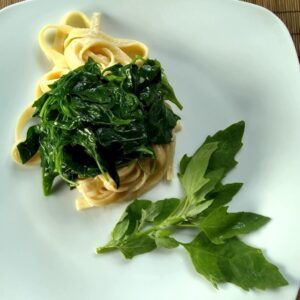
This recipe is a courtesy of my daughter Natalia. I tried it while I was visiting her in Milano, Italy. She makes it with Cima di Rapa (Broccoli Rabe) but it can be made with mustard greens, kale, chard or spinach.
Ingredients:
8 oz. dry pasta or 16 oz. of fresh pasta, cooked
10 oz. cenizo (Chenopodium berlandieri). Substitute purslane or spinach or kale or chard
2 garlic cloves finely chopped
butter
olive oil
4 tbsp of sour cream
The juice of 1 Lemon
lemon zest to taste
salt to taste
grated Parmesan cheese for garnish (optional)
Instructions:
Sautée the quelites in butter with the garlic and salt until soft. Remove and reserve. In the same sauteing pan, place the cooked pasta with some olive oil and sautée it lightly. Add the sour cream, the lemon juice, and zest some of its skin too. Verify for salt. Serve the quelites over the pasta and garnish with cheese. Buon appetito!
Yield: 4 portions
Heat Scale: None
Leek, Potato, Poblanos and Quelites soup
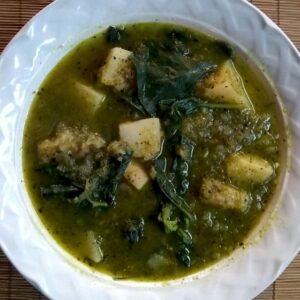
Leek and potato soup is a classic from the old continent to which Chef Stephen Pyles added poblano chiles to make it a winner and one of my favorite soups. In the rainy season, the abundance of quelites suggests adding them to this soup for a change in a cold afternoon.
Ingredients:
3 medium size cooked potatoes cut in small cubes. Save the water where the potatoes were boiled
3 roasted poblano chiles stemmed, seeded. Deveined optional
1 piece of leek
10 oz. of quelites of your choice. Spinach or purslane work wonders
2 garlic cloves, finely chopped
olive oil
Salt to taste
Instructions:
Cut the leek in ¼-inch thick slices and sautée in the olive oil in the pot where you are going to boil the soup. After the leek has changed color, add the garlic and finish sauteing. Reserve
In a blender mix half of the potatoes, poblanos, and leek with garlic to a texture of your choice using the water where the potatoes were boiled. Pour the mix into the cooking pot and the other half of the potato cubes, and boil for five minutes. Add the quelites and salt and boil for three additional minutes. Ready!
Yield: 4 portions
Heat level: Medium to hot
Latest posts by José C. Marmolejo (see all)
- Unconventional Seafood Salsas - 04/25/2022
- Cocineras Tradicionales: The Traditional Cooks of Mexico - 04/01/2022
- Carnitas Calientes - 03/11/2022

